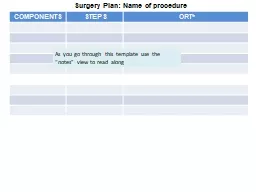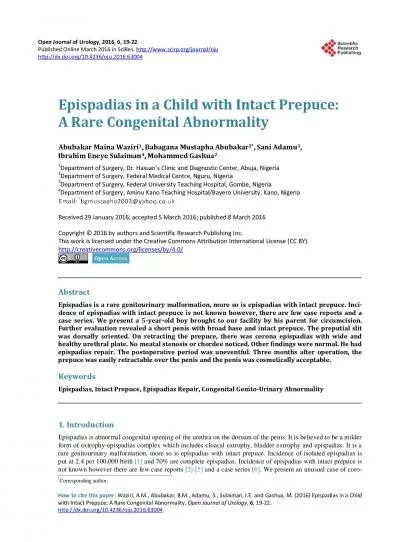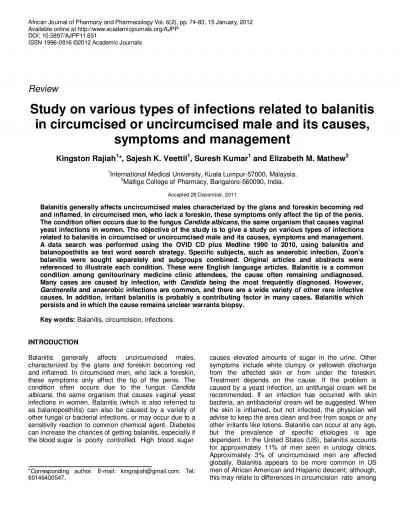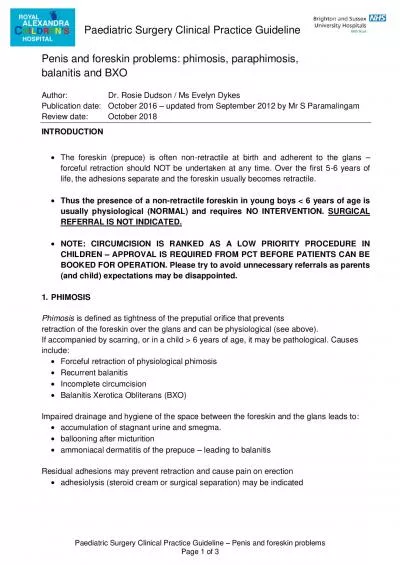PDF-Balanitis is defined as inflammation of the glans penis which often i
Author : quinn | Published Date : 2022-08-16
Abstract In the present scenario where there is a decline in the tropical Sexually Transmitted Diseases STDs balanoposthitis is the common condition in uncircumcised
Presentation Embed Code
Download Presentation
Download Presentation The PPT/PDF document "Balanitis is defined as inflammation of ..." is the property of its rightful owner. Permission is granted to download and print the materials on this website for personal, non-commercial use only, and to display it on your personal computer provided you do not modify the materials and that you retain all copyright notices contained in the materials. By downloading content from our website, you accept the terms of this agreement.
Balanitis is defined as inflammation of the glans penis which often i: Transcript
Download Rules Of Document
"Balanitis is defined as inflammation of the glans penis which often i"The content belongs to its owner. You may download and print it for personal use, without modification, and keep all copyright notices. By downloading, you agree to these terms.
Related Documents














